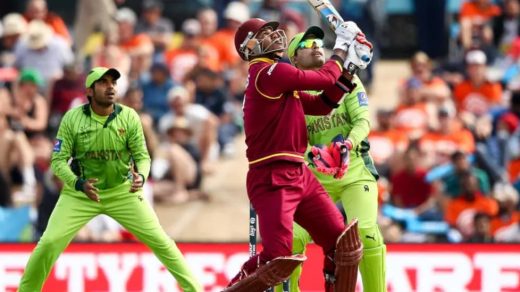Cricket has a special magic when one player can change the game with both bat and ball.
That’s the beauty of all-rounders. They don’t just play cricket—they redefine it.
When your team is struggling at 40 for 5, you need an all-rounder to walk in and rebuild the innings.
When opposition batsmen are smashing runs everywhere, you need that same player to grab the ball and break the partnership.
All-rounders carry double the pressure and deliver double the impact. They’re the players coaches dream about, teammates rely on, and fans adore.
From Jacques Kallis’s quiet consistency to Shahid Afridi’s explosive chaos, these legends proved that mastering two skills beats specializing in one.
What makes someone truly great as an all-rounder? It’s not just about decent batting and bowling averages. It’s about stepping up when everything’s on the line.
It’s about winning impossible matches through sheer willpower and skill. It’s about being the player everyone looks toward when hope seems lost.
Best All-Rounders in Cricket History

This article celebrates the best all-rounders in cricket history – players who didn’t just contribute; they dominated.
Let’s talk about the legends who made cricket richer, more exciting, and infinitely more unpredictable.
Also Check: Virat Kohli IPL Century List
Top 10 Best All-Rounders in Cricket History
1. Jacques Kallis – The Silent Superstar
Jacques Kallis never sought attention, but his numbers scream greatness louder than any celebration ever could. Calling him just an all-rounder feels like undervaluing a diamond.
Kallis scored nearly 25,000 international runs—that’s more than most batting legends. His 45 Test centuries sit second only to Sachin Tendulkar.
His Test batting average of 55.37 is higher than Tendulkar’s, Lara’s, and pretty much every batting great you can name.
But here’s what blows minds: Kallis also took 565 international wickets. He wasn’t bowling part-time military medium. He was a genuine threat who could swing the ball, maintain pressure, and break crucial partnerships.
Quick Facts:
- Test runs: 13,289 at 55.37 average
- Test wickets: 292 at 32.65 average
- ODI runs: 11,579 at 44.36 average
- ODI wickets: 273 at 31.79 average
- Test catches: 200+ (only two players ever achieved this)
What’s even more amazing is this stat: Kallis took more wickets (565) than times he got dismissed (564). Read that again. Nobody else in cricket history has done this. Nobody probably ever will.
Kallis proved that consistency beats flash. Match after match, year after year, he delivered. No drama, no headlines, just pure excellence. That’s why he’s King Kallis.
Also Check: Virat Kohli Total Runs in All Formats
2. Garfield Sobers – Cricket’s Superman
Garfield Sobers wasn’t just an all-rounder—he was cricket’s Superman. If you could design the perfect cricketer, you’d create Sobers and still fall short.
Sobers could bat with power and elegance that made bowlers look helpless. He could bowl fast with genuine pace. He could spin the ball both ways – leg-spin and off-spin—and sometimes bowled with either hand just to confuse batsmen further. On top of that, his fielding was athletic and spectacular.
One famous story defines Sobers: West Indies were trailing by 250 runs and heading toward certain defeat. Sobers walked in and turned the match around single-handedly, smashing boundaries and sixes until his team won. That’s the kind of impact he had—turning impossible into routine.
Why Sobers Was Special:
- Supreme batting technique across all conditions
- Could bowl fast, spin leg-breaks, and bowl off-spin—all in one match
- One of cricket’s finest fielders
- The captain who led with intelligence and flair
Sobers played in an era without modern training, fancy equipment, or video analysis. Yet his natural talent and cricket intelligence made him untouchable. Many historians still consider him the greatest all-rounder ever. It’s hard to disagree.
Also Check: Most Fan Following Team in IPL
3. Imran Khan – The Champion Who Improved With Age
Most cricketers peak early and fade. Imran Khan did the opposite—he got better with time, especially after becoming Pakistan’s captain.
Before captaincy, Imran’s numbers were decent but not legendary. He averaged around 19 with the bat and over 28 with the ball. Then he became captain, and everything changed. His batting average jumped above 55, and his bowling average dropped below 18. That’s the best transformation any captain in cricket history ever achieved.
But Imran wasn’t just about statistics. He was charismatic, inspiring, and fearless. He led Pakistan to their first and only World Cup victory in 1992, cementing his legacy as Pakistan’s greatest cricketing hero.
Imran’s Legacy:
- A fast bowler who swung the ball viciously
- A batsman who could anchor or attack depending on the situation
- The captain who transformed Pakistan cricket
- Led Pakistan to the 1992 World Cup glory
What separated Imran from legends like Ian Botham and Kapil Dev? While others declined in their final years, Imran peaked. He retired at the absolute top of world cricket, proving determination can defeat natural aging.
4. Kapil Dev – India’s First All-Round Hero
Before Kapil Dev, Indian cricket was about spin bowling and cautious batting. Kapil changed everything. He bowled genuinely fast, batted aggressively, and fielded athletically—all things Indian cricket desperately needed.
Kapil’s defining moment came in the 1983 World Cup. India was 17 for 5 against Zimbabwe, heading toward disaster. Kapil walked in and smashed 175 runs—an innings so brilliant it saved India’s campaign and eventually led to their World Cup triumph.
But Kapil wasn’t a one-match wonder. He became India’s first bowler to take 400 Test wickets while also scoring 5,000+ Test runs. He did it all—batting, bowling, fielding, and captaincy.
Kapil’s All-Round Brilliance:
- Over 5,000 Test runs and 400+ Test wickets
- An aggressive batsman who changed the match momentum
- Fast bowler with swing and control
- Outstanding fielder (his catch of Viv Richards in 1983 is iconic)
Kapil excelled everywhere—batting, bowling, fielding, and leadership. Unlike all-rounders weak in one area, Kapil was strong in everything. That complete package makes him one of the best all-rounders in cricket history.
5. Ian Botham – England’s Rockstar
Ian Botham was cricket’s rockstar. When he walked onto the field, crowds expected fireworks—and he delivered often enough to become legendary.
Botham’s greatest performances came in the 1981 Ashes, forever known as “Botham’s Ashes.” England was down and almost out. Then Botham produced performances so incredible that England won matches they had no business winning.
He could smash centuries with brutal power, bowl hostile fast-medium spells, and catch anything within reach. Botham played cricket with aggression and confidence that sometimes looked like arrogance—but he backed it up.
Why Botham Was Special:
- 102 Tests with 5,200+ runs and 383 wickets
- Match-winner who thrived under pressure
- Made cricket exciting with fearless play
- One of England’s greatest sporting heroes
Botham wasn’t always consistent, and his captaincy had struggles. But when he fired, nobody could touch him. He made cricket thrilling, proving all-rounders could be entertainers as much as match-winners.
6. Shakib Al Hasan – Bangladesh’s Greatest Export
Shakib Al Hasan might surprise people on this list, but his numbers and impact justify his place among legends.
For Bangladesh, Shakib has been everything—their best batsman, best bowler, and best fielder rolled into one. He’s the reason Bangladesh evolved from cricket’s punching bag to respectable Test nation.
Shakib’s left-arm spin is accurate and wicket-taking. His batting is aggressive and fearless. His temperament under pressure is exceptional. Look at Bangladesh’s famous victories, and you’ll find Shakib contributing with bat, ball, or both.
Shakib’s Brilliance:
- Over 14,000 international runs across formats
- Over 650 international wickets
- Ranked number 1 in ICC all-rounder rankings multiple times
- Bangladesh’s greatest cricketer ever
What makes Shakib special? He performs against top teams without fear. Whether facing Australia, India, or England, Shakib plays with confidence and skill that elevates his entire team. That’s true greatness.
7. Richard Hadlee – The Bowling All-Rounder
Richard Hadlee was primarily a fearsome fast bowler who also happened to be a capable batsman—good enough to make him one of cricket’s greatest all-rounders.
Hadlee’s bowling average of 22.29 is the third-best of all time. He could swing the ball, bowl fast, and intimidate batsmen with hostile spells. For New Zealand, he was often a one-man bowling attack.
As a batsman, Hadlee wasn’t flashy but was effective. His batting average was better than many specialist number 6 and 7 batsmen. He could defend or attack depending on what the team needed.
Hadlee’s Impact:
- 431 Test wickets at 22.29 average
- 3,124 Test runs at 27.16 average
- New Zealand’s greatest cricketer
- Brought respectability to New Zealand cricket
Hadlee proved all-rounders don’t need equal excellence in bat and ball. Being world-class in one discipline and very good in another is enough if your impact wins matches consistently.
8. Shahid Afridi – Cricket’s Wildcard
Shahid Afridi was cricket’s most unpredictable all-rounder. You never knew what you’d get—a match-winning fifty or a golden duck, a five-wicket haul or expensive bowling. But whatever happened, it was never boring.
Afridi held the record for cricket’s fastest century for 18 years. He has the most sixes in ODI cricket and the highest strike rate. As a leg-spinner, he took over 500 international wickets, including a devastating 7 for 12 against West Indies.
Afridi’s Wild Ride:
- Over 11,000 international runs at explosive strike rates
- Over 500 international wickets
- Most sixes in international cricket
- Match-winner who could change games in minutes
Afridi wasn’t consistent, and his career average doesn’t scream traditional greatness. But his ability to win matches single-handedly through explosive batting or devastating bowling makes him unforgettable. Cricket needs entertainers like Afridi.
9. Sanath Jayasuriya – The Revolutionary Opener
Sanath Jayasuriya revolutionized opening batting in ODI cricket. Before him, openers played cautiously. Jayasuriya walked out and attacked from ball one, demolishing bowlers during powerplays.
But Jayasuriya wasn’t just a batsman. His left-arm spin took over 400 international wickets, making him a genuine all-rounder who contributed significantly with the ball.
Jayasuriya’s Numbers:
- Over 21,000 international runs
- Over 440 international wickets
- Fastest ODI fifty at one point
- Key player in Sri Lanka’s 1996 World Cup victory
Jayasuriya proved that all-rounders could change cricket’s very approach. His aggressive opening style influenced generations of batsmen who followed. That’s legacy beyond statistics.
10. Andrew Flintoff – England’s Warrior
Andrew Flintoff, or “Freddie,” was England’s hero during the famous 2005 Ashes. His all-round performances almost single-handedly defeated Australia, breaking their dominance.
Flintoff bowled fast and hostile, intimidating batsmen with pace and bounce. He batted with power and courage, often rescuing England from trouble. His competitive spirit made him a natural leader.
Flintoff’s Legacy:
- Match-winner in the 2005 Ashes
- A fast bowler who troubled the best batsmen
- Power-hitter who could demolish attacks
- Symbol of a never-give-up attitude
Injuries shortened Flintoff’s career, but his impact during his peak years secured his place among the best all-rounders in cricket history.
Honorable Mentions: More All-Round Heroes
Some players deserve recognition even if they didn’t make the top 10:
- Yuvraj Singh – India’s 2011 World Cup hero who smashed six sixes in one over and provided crucial bowling breakthroughs. His cancer battle and comeback made him inspirational beyond cricket.
- Shane Watson – Australia’s powerful opener, who could bowl useful medium pace. His IPL exploits and crucial World Cup contributions made him valuable across formats.
- Daniel Vettori – New Zealand’s greatest spinner, who also batted reliably in the lower order. His left-arm spin troubled batsmen worldwide for over a decade.
These players showed that all-round cricket has many forms—some excel equally in both disciplines, others dominate one while contributing significantly in the other.
Final Verdict:
The best all-rounders in cricket history didn’t just play matches—they created moments that defined eras.
From Kallis’s quiet consistency to Afridi’s explosive chaos, from Sobers’ supernatural talent to Imran’s inspirational leadership, these legends proved that versatility combined with excellence creates impact beyond what specialists achieve.
They rescued lost causes, won impossible matches, and inspired millions worldwide. Their records might eventually be broken, but their impact on cricket’s history remains permanent.
What makes them special isn’t just their statistics—it’s how they made cricket richer, more exciting, and infinitely more unpredictable. They showed that one player mastering two crafts can change entire matches, series, and careers.
Next time you watch cricket and see an all-rounder walking to bat or tossing the ball, remember these legends. They set the standard. They showed what’s possible when talent, hard work, and cricket intelligence combine perfectly.
That’s the true legacy of cricket’s greatest all-rounders—not just their numbers, but how they made us believe that in cricket, one player really can do it all.



